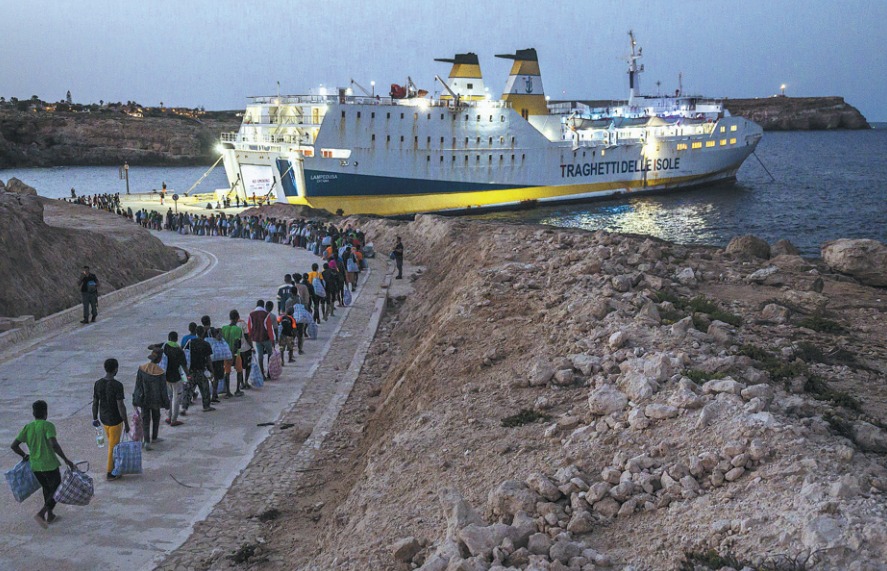As the Mediterranean island of Lampedusa grapples with an overwhelming influx of irregular migrants, European Commission President Ursula von der Leyen has revealed a 10-point plan aimed at addressing the crisis. However, experts and observers are raising doubts about the effectiveness of the proposed measures.
A Growing Crisis on Lampedusa:
A dire humanitarian situation is unfolding on the picturesque Mediterranean island of Lampedusa, nestled between Malta and Tunisia, as an estimated 11,000 irregular migrants have arrived from Africa in the past week alone. This surge in arrivals has pushed the island, with a local population of only 6,000, to the brink of crisis. The island’s migrant reception center, designed to accommodate just 400 migrants, has been stretched to its limits, prompting the local mayor, Filippo Mannino, to declare a state of emergency last Wednesday.
Doubts Surround EU’s Response:
Amid growing concerns and tensions on Lampedusa, European Commission President Ursula von der Leyen, Italian Prime Minister Giorgia Meloni, and European Commissioner for Home Affairs Ylva Johansson embarked on a visit to the island. They inspected the so-called “boat graveyard,” where vessels used by irregular migrants are stored, and met with the local community. However, von der Leyen’s unveiling of a 10-point plan to address the crisis has left some experts and observers skeptical of its efficacy.
“Migration is a European challenge that requires a European answer and solution,” von der Leyen asserted during her visit. She emphasized the need for concrete actions, unity, and solidarity within the European Union to address the issue. “We will decide who comes to the European Union and under what circumstances, and not the smugglers and traffickers,” she added.
Local Tensions Erupt:
As the migrant crisis escalated, some local residents expressed their frustration through protests against the irregular migrants who have overwhelmed the island. Prime Minister Meloni assured protesters that every effort was being made to address the situation. At a news conference held at the Lampedusa airport, she emphasized that the “massive flow of immigrants” is a challenge that demands a pan-European approach.
“If somebody here in Europe were to think that this crisis that we are tackling and facing could just be solved within Italian borders, then it would be a very big and huge mistake,” Meloni warned. She underscored the importance of addressing the external dimensions of the issue and halting illegal departures.
A Controversial 10-Point Plan:
During the news conference, von der Leyen unveiled the 10-point plan aimed at aiding Italy in managing the migrant crisis:
- Increasing assistance to Italy through the EU Agency for Asylum and EU border protection agency Frontex.
- Supporting the transfer of migrants arriving in Lampedusa to other countries willing to accept them.
- Enhancing cooperation with African countries, the primary source of migrants, to address the issue at its roots.
- Increasing the number of migrants to be repatriated.
- Combating human trafficking through partnerships with source and transit countries.
- Intensifying border patrols at sea and in the air.
- Disrupting human traffickers’ logistical networks.
- Strengthening cooperation with United Nations migration and refugee agencies for voluntary returns.
- Implementing migration agreements.
While the EU signed a deal with Tunisia in July to curb illegal migration from North Africa, the European Commission has yet to fulfill its promise of providing 100 million euros ($106.6 million) under the agreement. Additionally, Prime Minister Meloni’s call for a naval blockade of North Africa, aimed at tackling the crisis, was notably absent from von der Leyen’s announcement.
As Lampedusa grapples with this mounting humanitarian challenge, the effectiveness of the EU’s 10-point plan remains a subject of intense debate, leaving many to wonder whether it will provide the remedy needed to alleviate the crisis on the island.















